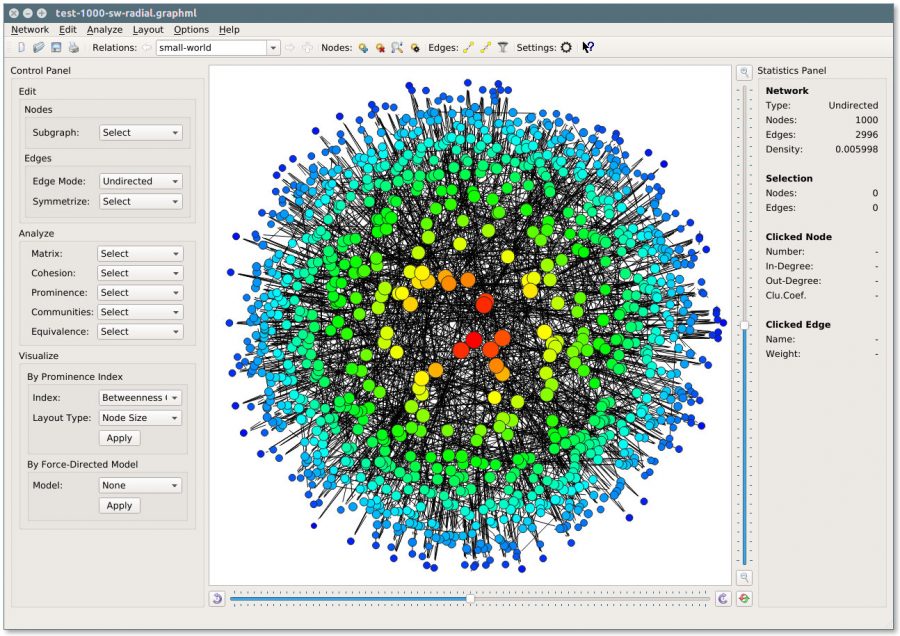The Social Network Visualizer project has released a brand new version of our favorite social network analysis and visualization software application. SocNetV version 2.4, released on Feb 28, is a major upgrade bringing lots of new features, such as Kamada-Kawai FDP layout. The new version is available for Windows, Mac OS X and Linux as usual. Linux user may download a very light AppImage — just click it to run the app!
See a brief discussion of the new features and changes in version 2.4 at:
http://socnetv.org/news/?post=socnetv-24-released







